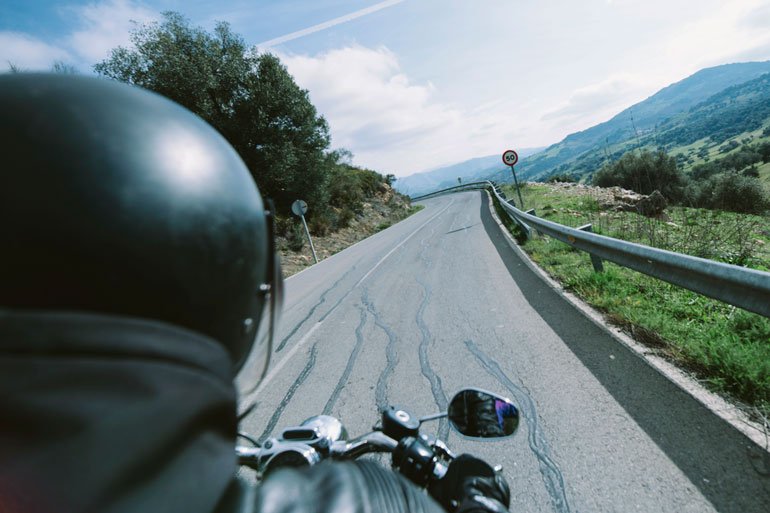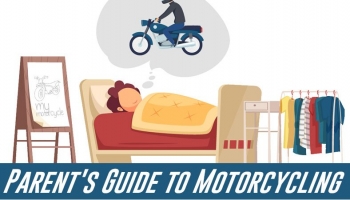How to Shift Gears on a Motorcycle

Learning how to shift a motorcycle is one of the most important things when it comes to learning how to ride.
If you have some knowledge of how to ride a manual transmission car, the task of shifting a bike might not be as complicated. However, if you have no experience with a manual transmission, you’ll find the subject a bit daunting.
You shouldn’t be afraid since shifting a bike is much simpler than it looks and is easily mastered with a bit of persistence and practice.
Continue reading to learn some tips and tricks on how to master this quickly and easily.
Familiarizing Yourself with Motorcycle Gears
The three controls to use when shifting are the throttle, the clutch, and the gear selector. The throttle’s task is to rev the engine, while your clutch engages and disengages the transmission. Its gear selector, as the name implies, selects the gears.
A good example of how it works is to pull the clutch with your left hand. You can now rev the engine without moving the vehicle forward. However, if you release your clutch while the bike is in gear, you’ll move it forward.
The throttle is on your right handlebar, while the clutch is a lever located above your left handlebar. The gear shifter is a lever located in front of your left foot pedal.
Shifting is sequential, meaning that the lowest gear is in 1st, and then comes neutral, following 2nd, 3rd, 4th, 5th, and 6th if applicable.
Knowing When to Change Gears
Typically, you’d watch the tachometer that measures the engine’s RPM telling you it’s time to either shift low or high. However, that means you’d have to look away from the road, which isn’t always the smartest idea, especially if you’re a beginner.
You should learn how your bike sounds and feels when it’s time to shift higher or lover. There’s a basic rule of sound, stating that if the engine sounds high, you should shift higher. If the engine sounds slow, you should shift lower.
This might sound complicated, but with time and experience, you’ll also develop muscle memory about these things.

Techniques and Shift Pattern
A typical shifting technique has the following steps:
- Disengaging the clutch with your left hand
- Selecting the right fear with the shift lever
- Revving the engine by twisting the throttle
- Gradually release the clutch
When you’re in first gear and shifting up to second, the most important thing is to give your motorcycle a reason for that. In other words, you want to speed up enough to reach the limit of rotation speed but not exceed it.
When you achieve sufficient speed, close the throttle and squeeze in the clutch. Lift the shift peg as far as it will go and continue to move into higher gears
Make sure not to make the engine scream since that shortens its lifespan and reduces its capabilities.
Downshifting requires you to close the throttle as you press your clutch. Press the gear shift and then release it. Now you should adjust your clutch and throttle (note: this is together) to match your current speed. Keep the throttle closed if you’re coming to a stop, and hold in the clutch, pressing and releasing it until you’re in first gear.
Finding Neutral
This is usually the biggest challenge to beginners. It takes some practice and effort, but it shouldn’t be as hard with a gentle and patient approach.
The neutral is between the first and the second gears. To find it, nudge the shifter downwards from second while pulling the clutch in. Make sure to pull it all the way, otherwise, it might be harder for you to get into neutral.
Look for the neutral indicator light on the instrument panel. In most cases, it’s in green color. If you accidentally go into first gear, which is a common problem, just make sure not to apply too much pressure to the shifter.
With time and as you gain more experience, you shouldn’t have any problems finding the neutral.
What to Do if You Stall
You might stall if you gear up too soon. This tends to happen as a result of the engine not having enough power to do what you want it to do. If this happens, making sure not to panic is the most important thing to start with.
Grab your clutch lever and shift down 7, 8 about 1000000 times. Press the start button, clutch in, and start again.
Helpful Tips for Shifting Smoothly
The best way is to watch how your bike behaves. If it jerks when you’re letting out your clutch, you’re probably too rough with your left hand. If it lurches ahead, you’re probably applying too much throttle.
Your bike might slow down during shifts, and this happens when you’re not revving the engine enough between changes.
Smooth-shifting requires experience but pay attention to the way the three components interact with each other. It’s critical to orchestrate the three to work in a perfectly timely manner.
By releasing the clutch slowly, you ensure everything goes smoothly. Shift down one gear at the time and make sure to shift up when the engine hits the rev limiter.
More Reading: Women’s Motorcycle Riding Beginners Guide
Tips for Slowing to a Stop
You’ll probably have to downshift as you slow down because each gear has a certain range of speeds. You should downshift as you decelerate, especially if you’re coming from a high speed to a complete stop.
Downshift as you decelerate, select a lower gear, and let out the clutch by adjusting the throttle to match. This allows the engine to brake and slow down while also enabling you to accelerate again if the conditions change.
Once you come to a complete stop, you should shift into neutral and just hold the brake. Shift into first gear right before you’re about to accelerate and go.
Parking
When you’re parked at an incline, you should leave the bike in first gear. If you’re on level ground, you can leave the motorcycle in neutral.
Manual vs. Semi-Automatic Transmission
Manual transmission requires you to shift the gears up or down depending on the conditions. It’s what we talked about above.
Semi-automatic transmission is somewhat easier to use. To shift gears on such a bike, you need to throttle the engine and use the shifter. The clutch on a semi-automatic is tied into the gear shift, so you activate both by using it.
Frequently Asked Questions
What Happens If I Skip a Gear?
It’s not recommended to skip a gear when shifting up since that can result in stalling unless you give the engine enough power. If you skip a gear when shifting down, you should slow down enough. Either way, it’s possible but not recommended since it’s not the smoothest way to ride.
Where is The Clutch On a Motorcycle?
On a motorcycle, it is always in front of the left handgrip.
Conclusion
Learning how to shift smoothly is important, but it’s not as complicated as people often think. For beginners, it takes some practice to master, but with time, you’ll find it easier and easier to do.
It’s critical to know where each command is, so make sure to familiarize yourself with that in time. Also, take time to practice slowly and gradually, outside of dense traffic.
Give yourself time and be patient. Even stalling is normal, as long as you don’t panic. Practice around the neighborhood and make sure always to wear a helmet.






